From Deserts to Biospheres: Understanding Ecosystems
Everglades, sea floors, watersheds, and deserts: these paintings illustrate the complex ecosystems that make up these varied environments and the delicate balance found within. They also show the devastating impact human activity can have and the powers of adaptation animals are capable of. Finally, the Biosphere 2 at the University of Arizona shows the concerted human efforts being made within the scientific community to better understand the secrets behind self-sustaining environments.
Everglades, sea floors, watersheds, and deserts: these paintings illustrate the complex ecosystems that make up these varied environments and the delicate balance found within. They also show the devastating impact human activity can have and the powers of adaptation animals are capable of. Finally, the Biosphere 2 at the University of Arizona shows the concerted human efforts being made within the scientific community to better understand the secrets behind self-sustaining environments.

A look at the everglade ecosystem and the balance between prey and predator. Fish feed on algea, alligators feed on fish, and birds feed on snails and fish. Created using Eon Vue and painted with Adobe Photoshop for an upcoming Ecology textbook from WH Freeman. The three images below are close-ups of various sections of the illustration, demonstrating the details present within the various subsects of this ecosystem.
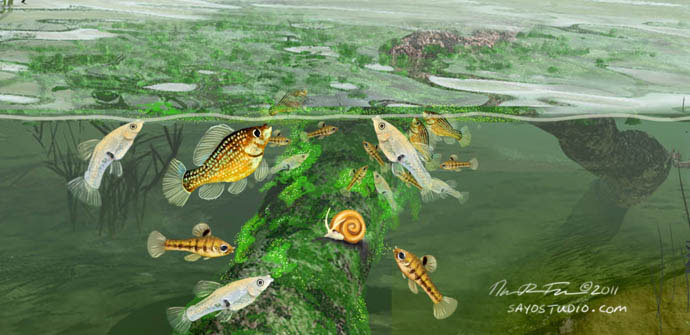

Bottom trawling (commercial fishing) has huge environmental impacts, devastating the life on the bottom of the ocean floor. In addition to torn up seabeds, animals unintentionally get caught in the massive nets. Sea turtles, dolphins, and others are constantly at risk, although trap-doors in improved nets try to mitigate the effects. Created using Eon Vue and Adobe Photoshop for an upcoming ecology textbook by WH Freeman. The two images below provide further detail for the difference between a healthy sea floor versus the damages of bottom trawling.
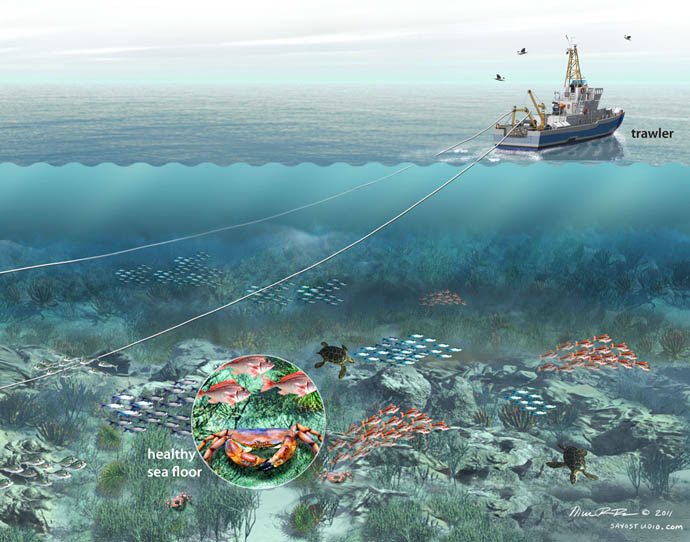
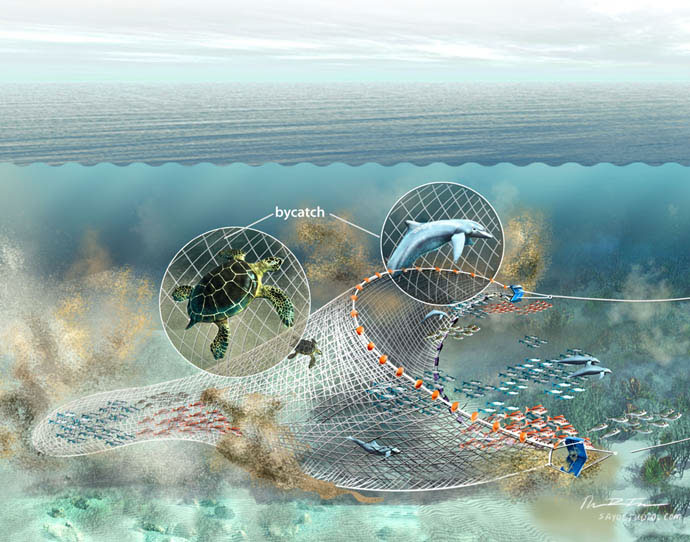
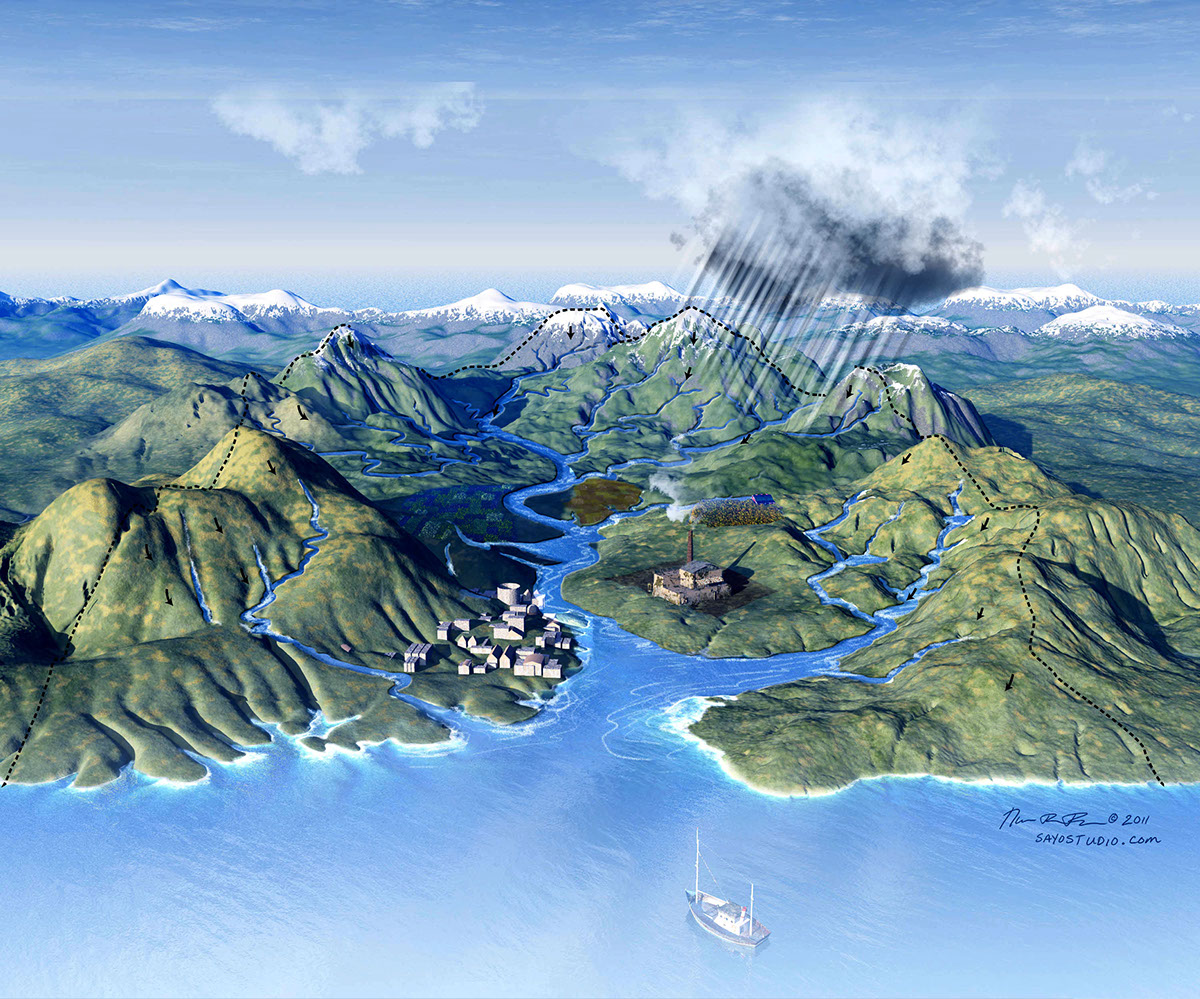
Watersheds extend far beyond the visible waterways to the surrounding hills and mountains that collect the rain. It's on these slopes that water is filtered, but also contaminated by agriculture, cities, and industrial zones. Created using Eon Vue and painted with Adobe Photoshop for an upcoming ecology textbook from WH Freeman.
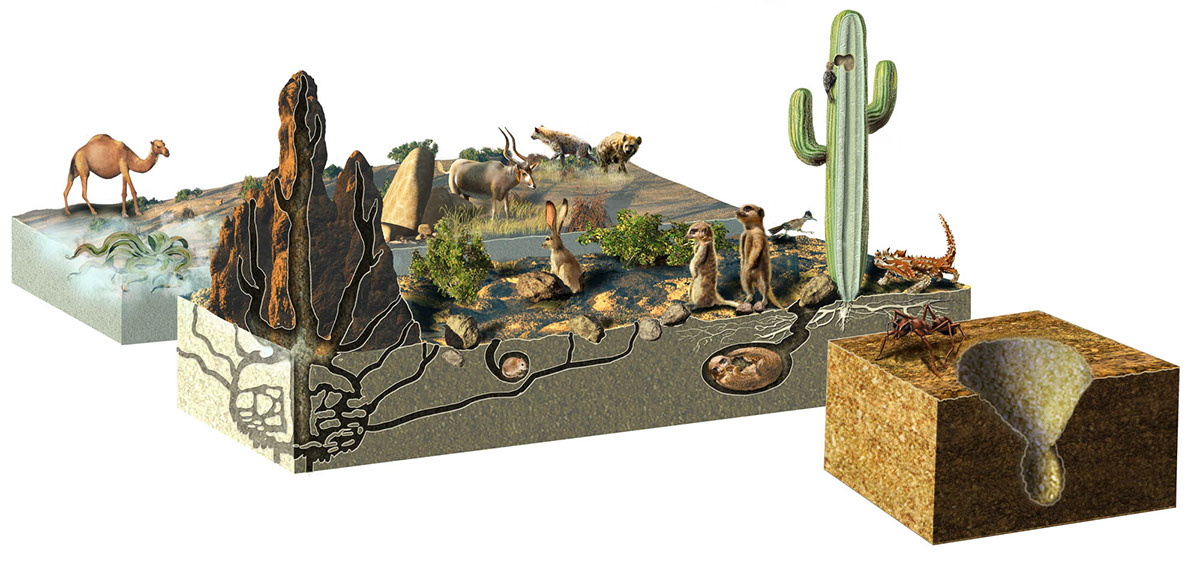
Although these animals wouldn't normally coexist (hailing from Africa, Australia, and the Americas), they all share adaptations to help them survive in the dry, arid conditions of the desert. In the back is a camel, an addax, hyenas, and a welwitschia plant. In the mid-ground is a cutaway of a termite mound, a kangaroo rat nestled in its burrow, a black-tailed jackrabbit, and meerkats. A gila woodpecker sits on the saguaro cactus and a thorny devil lizard hides behind. Finally, in the foreground is a Sahara desert ant. Created with Eon Vue and painted in Adobe Photoshop for How it Works Magazine.
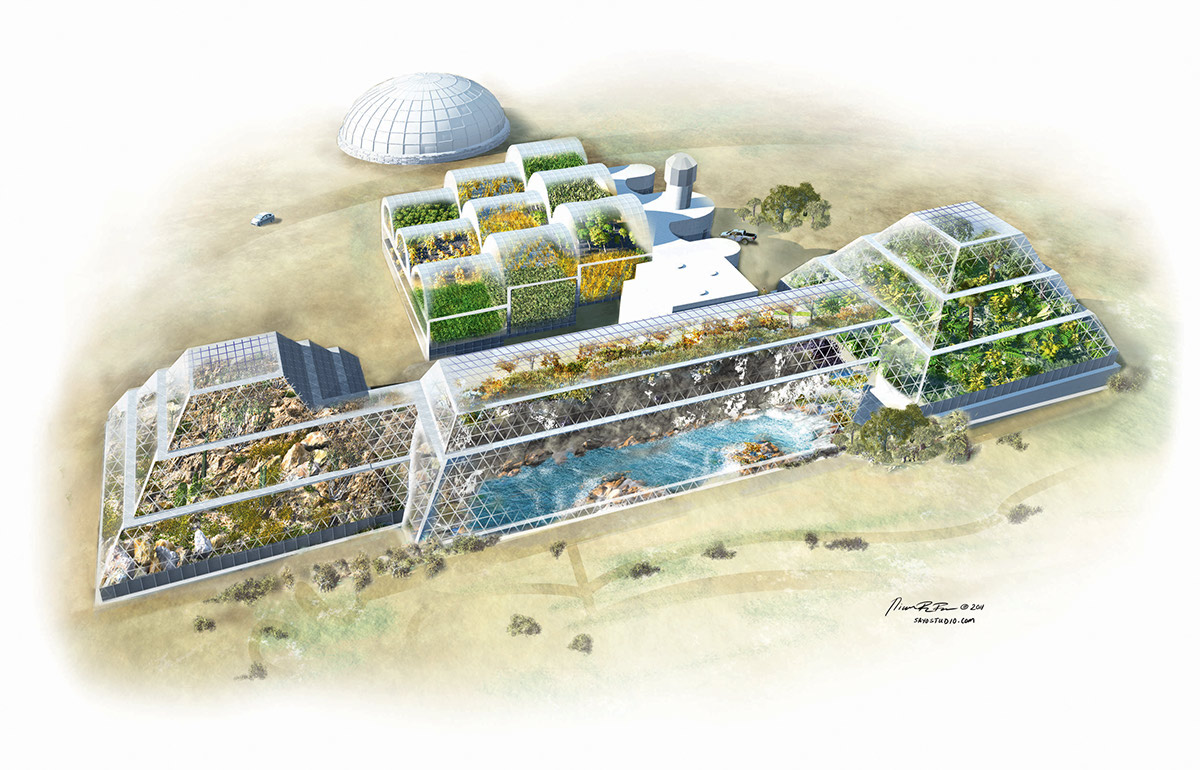
The Biosphere 2 was a grand experiment in the 1990s to determine what is essential to a self-sustaining environment. A glass-domed enclosure large enough to contain a mini tidal ocean, mangroves, rainforests, and savannah ecosystems was built in Arizona, where scientists lived for extended periods of time. Although scientists were not able to successfully live in an enclosed environment, much was learned about the subtle balance of oxygen and carbon usage. Created using Eon Vue and painted with Adobe Photoshop for an upcoming ecology textbook from WH Freeman.


